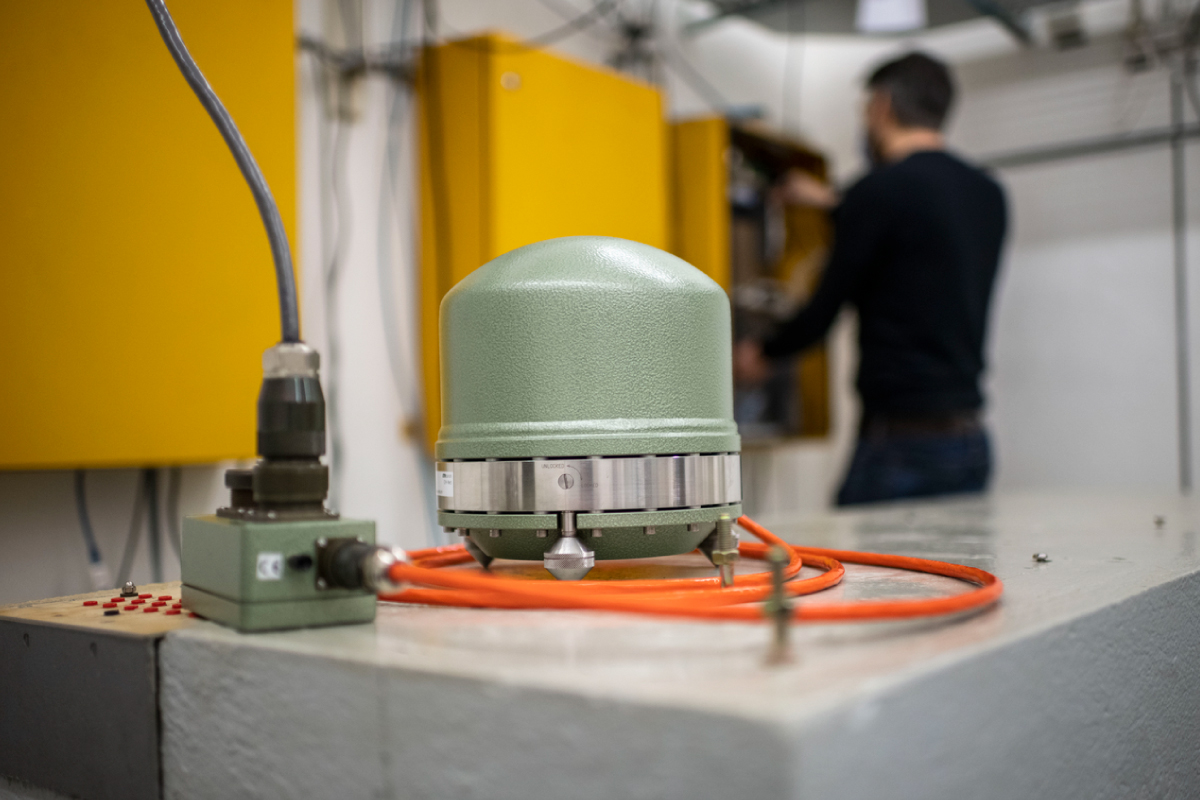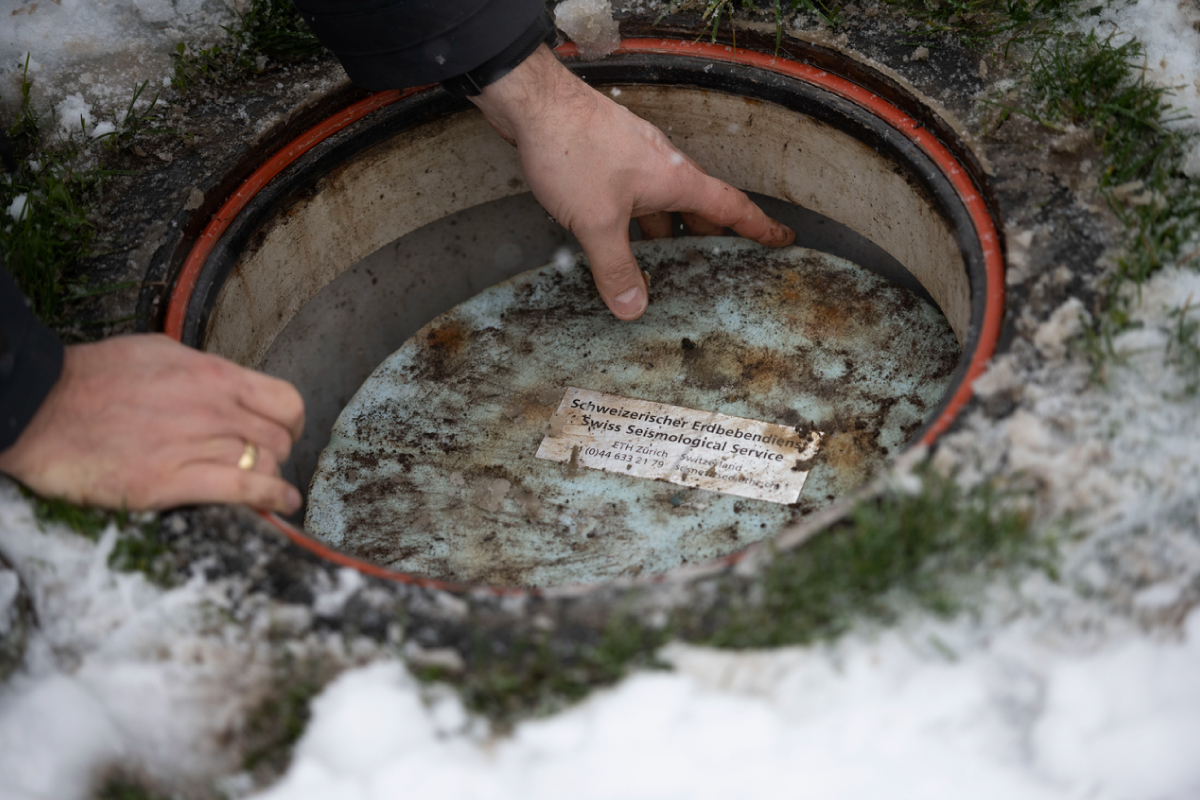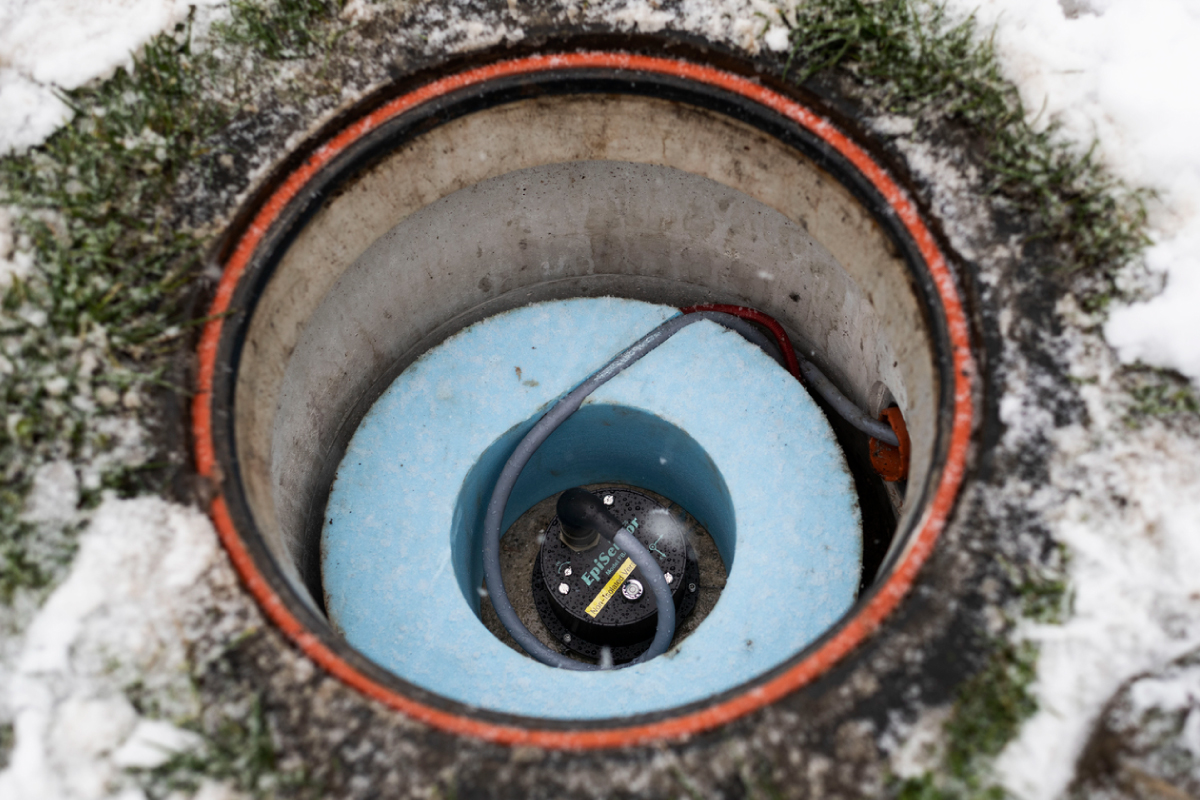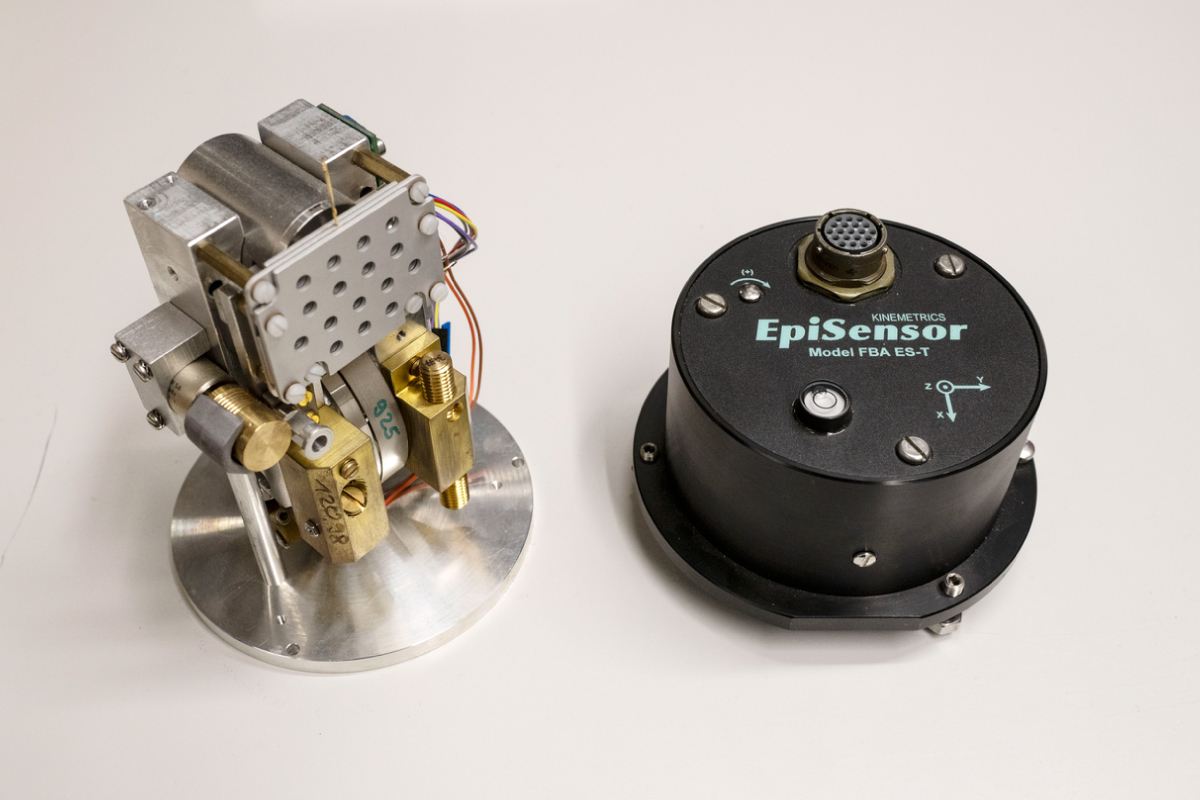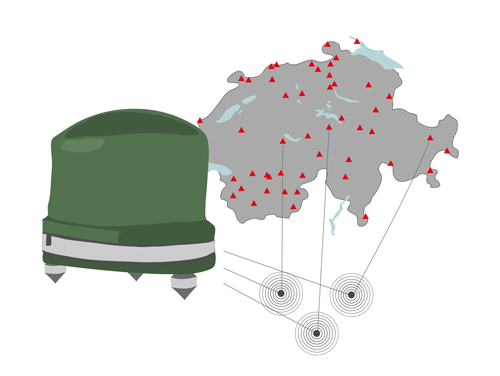Overview national seismic network
The Swiss National Network (CHNet) consists of both the Swiss Digital Seismic Network (SDSNet) and the Swiss Strong Motion Network (SSMNet). The Swiss Seismological Service mainly uses broadband seismometers to register weak local, moderate regional and moderate to strong global earthquakes. In addition, SSMNet accelerometers record moderate and strong local quakes.
The accurate pinpointing of earthquake locations depends on observations gathered from multiple stations with no large azimuthal gaps, including stations close to the epicentre. However, since damaging ground motion experienced in Switzerland can also stem from events occurring beyond its borders, the Seismic Network also monitors all nearby operational real-time stations in neighbouring countries.
Map of all real-time stations monitored by the SED in Switzerland
The main instrument at SDSNet stations is a highly sensitive broadband seismometer that registers even the slightest ground tremors caused by weak local, moderate regional and moderate-to-strong global earthquakes. Where possible, SDSNet stations are installed on solid rock in remote locations.
The SDSNet is the backbone of seismic monitoring efforts in Switzerland and the data it gathers enable the production of a homogeneous earthquake catalogue in terms of magnitude of completeness throughout the country. Currently, the lowest magnitude of a seismic event that can be reliably detected and pinpointed across Switzerland is 2.0. However, in areas where the network is densest and background noise is low, magnitudes of around 1.0 can be detected (NB: smaller earthquakes are often registered and mentioned on our website, but not all events of this size can be recorded, so our earthquake catalogue is incomplete at this level of magnitude).
Earthquakes with a magnitude of roughly 4.5 or above recorded close to an SDSNet station produce ground motions that are off-scale, exceeding the maximum range of the broadband sensors. As part of a network upgrade, all SDSNet sites will be equipped with an additional co-located strong-motion accelerometer to ensure that even large earthquakes are recorded without such saturation occurring, so that these stations record the full magnitude range, on-scale.
Map of all broadband and shortperiod seismometers monitored by the SED in Switzerland
The SSMNet compliments the SDSNet by providing additional network density and coverage.
SSMNet stations are equipped with an accelerometer that is capable of measuring moderate and strong local tremors. Most SSMNet stations are located in urban areas, high-risk regions and at locations where strong impacts are anticipated.
When large earthquakes occur, data from these stations provide crucial information for understanding the patterns of damage caused. Although these stations are designed to record ground motion, they can also register earthquakes that pass unnoticed by the local population.
Map of all accelerometers monitored by the SED in Switzerland
Most SDSNet stations are equipped with Streckeisen STS-2 broadband seismometers covering a period range from 120s to 50Hz with a nearly constant response. A few stations have Trillium 120s or 40s sensors, which have a lower resolution, especially at longer periods, but are more sensitive to higher frequencies. One borehole station in Basel is equipped with a 360s Guralp CMG-3T seismometer. All 5s or 1s short-period sensors are being upgraded to next-generation broadband sensors (the Streckeisen STS-2.5 and the Nanometrics Trillium 240s, whose performance is comparable to that of the Streckeisen STS-2 seismometer).
The digitiser and data acquisition systems used by the majority of these stations are various generations of Nanometrics devices. The ongoing network upgrade will see the older-generation systems with limited storage and communications options replaced by the very latest Nanometrics Centaur and Quanterra Q330HR systems. Furthermore, all broadband stations will be equipped with a co-located EpiSensor strong-motion sensor, so all earthquakes will be recorded on-scale at these sites within the backbone system.
All SSMNet stations are fitted with a broadband 200Hz Kinemetrics EpiSensor accelerometer, alongside a Nanometrics Taurus or Centaur data logger.
The data loggers used in the CHNet are synchronised by GPS. The SDSNet stations sample the seismic signals at a frequency of at least 120sps, typically 120sps (STS-2), 200sps (STS-2.5, Trillium 40s, 120s, 240s) and 250sps (stand-alone EpiSensors).
Communications between the field and Zurich are ensured by a variety of independent web-based providers to prevent a 'single point of failure' scenario. Most SSMNet stations use cellular communications, though more robust solutions are used for the backbone SDSNet. All stations use broadband, minimum-latency solutions that are primed for Earthquake Early Warnings. Data packets are sent at least every second, with a communication latency of under 1s.
The ambient noise of a seismic station is the sum of acoustic signals in the background environment, The noise level is influenced not only by the site's proximity to human activity and infrastructure, but also by its geology, temperature, pressure stability and even its distance from the sea. Since CHNet uses very sensitive instruments intended to measure background noise as opposed to sensor noise, it is important to minimise ambient noise to enable the detectability of even weak seismic signals.
The site selections for the SDSNet must be particularly meticulous, since the aim is to minimise ambient noise across the frequencies of interest, ranging from 100Hz to 1,000s. However, there has to be a trade-off between guaranteeing low ambient noise and ensuring that historical 'legacy' sites remain occupied. Many SDSNet sites were selected decades ago when sensor capability was very different and there was far less nearby infrastructure. Although some of these sites may now be considered noisy, they are important to maintain for the purposes of comparing records from events at the same site, even occurring decades apart, because recordings from the same site can help to identify recurrent events and better understand seismicity patterns. Another important consideration when selecting a site for a seismic station is ensuring adequate security and reliable power and communications. Sometimes sites with high ambient noise are chosen because it is important to measure earthquakes at a particular location: for example, we need to have sensors near Basel, even if the noise level there is high. In a bid to guarantee low noise levels over long periods (this is a key requirement for broadband sensors), tilt, temperature and pressure variations need to be kept extremely low, and the stations should be set up on solid rock.
Many SDSNet stations are located in former military bunkers and near dams, where excellent infrastructure already exists, levels of security and environmental protection are high and 'cultural noise' is often low. Natural caves and man-made tunnels also constitute high-quality sites. In the Alpine foreland, solid rock can be difficult to find, so sensors are placed in 100 to 150m-deep boreholes or in shallow concrete vaults.
SSMNet stations are often sited near old city centres or close to critical infrastructure like hospitals or schools. These sensors are placed outside buildings in shallow concrete vaults.
For any potential new stations, seismic noise measurements are taken continuously over a period of at least two weeks and the sites are only approved if the noise conditions there are deemed acceptable. Higher noise levels are expected in the Alpine foreland, where thick layers of sedimentary deposits and anthropogenic and/or cultural noise cannot be avoided.
The network's daily performance in terms of noise spectra for all continuously monitored SDSNet and SSMNet stations is updated every day and published on the PQLX webpages. More information on the local conditions at each CHNet site can be found in the Site Characterization Database for Seismic Stations in Switzerland.
